Key takeaways
- Understanding live music filming requires anticipating energy, managing lighting, and synchronizing sound with visuals.
- Essential equipment includes a good camera, stabilization gear, and quality audio equipment for capturing dynamic performances.
- Preparation involves researching the band and venue, arriving early, and maintaining flexibility in chaotic concert environments.
- Editing should focus on syncing audio and visuals, color grading, and curating impactful moments to convey the concert’s essence.
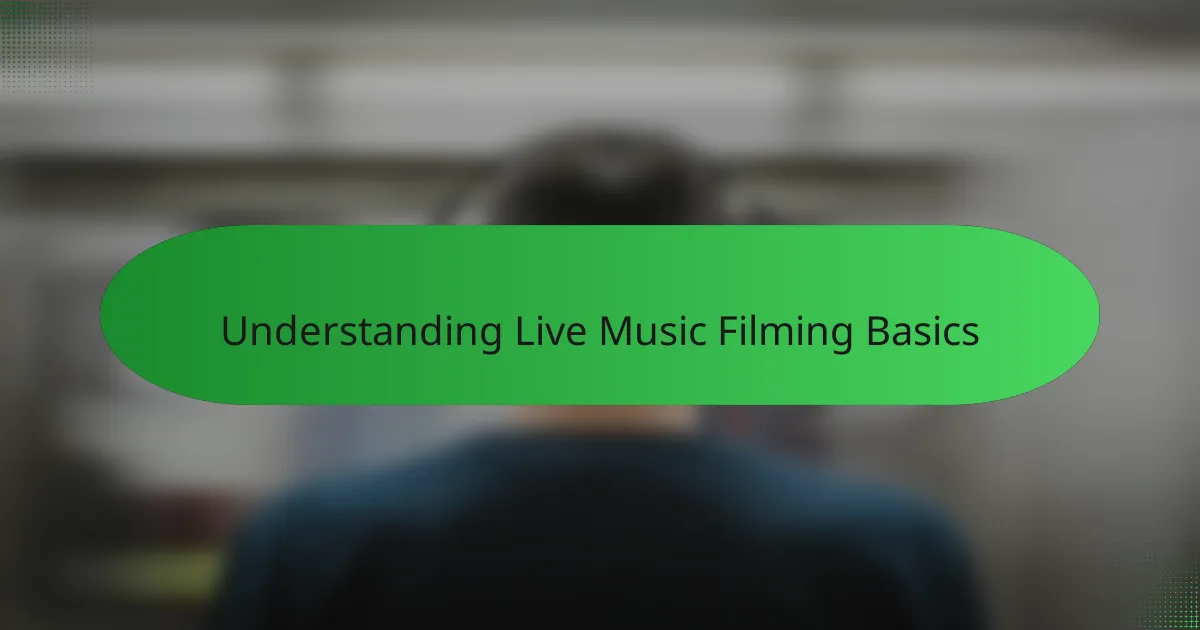
Understanding Live Music Filming Basics
Capturing live music is an art that goes beyond simply pointing a camera at the stage. From my experience, understanding the basics means knowing how to anticipate the energy of the moment—when the guitarist strikes a powerful chord or when the crowd erupts. Have you ever noticed how timing can make the difference between a flat shot and one that truly conveys the excitement of the show?
Lighting is another fundamental aspect that I quickly learned to respect. Concerts often have rapidly changing lights that can either enhance or ruin a shot if you’re not prepared. I remember a night when a sudden strobe effect almost blinded my camera lens, yet, managed to capture an eerie yet beautiful image of the lead singer lost in the music.
Sound and visual synchronization also play a critical role. Filming without paying attention to the audio cues can make the final product feel disconnected. I always try to stay engaged with what the band is playing live so that my footage reflects not just what you see, but what you feel at that moment. Isn’t that what makes live music so special?
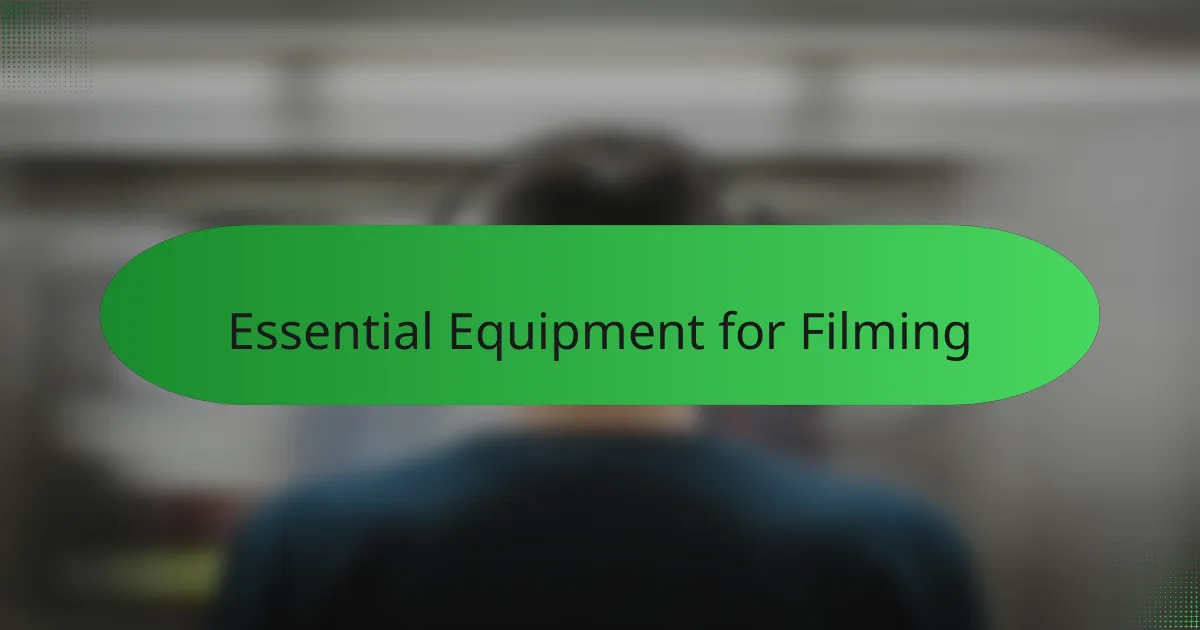
Essential Equipment for Filming
For me, having the right camera is non-negotiable. I rely on a DSLR or mirrorless camera because they handle low light much better than smartphones. Once, during a dimly lit indie rock set, my camera’s high ISO setting saved the day—capturing crisp images without that distracting grainy noise.
Stabilization gear is another piece I never leave home without. Handheld shots can quickly become shaky, which pulls you out of the moment. I’ve found that using a gimbal or even a sturdy tripod helps me keep the frame steady, making the footage look professional and immersive.
And let’s not forget about audio equipment. Capturing clean sound at a loud rock show is tricky, but a separate audio recorder or external microphone can make all the difference. I remember mixing a live video once where the built-in camera mic drowned in the crowd noise, so investing in better audio gear was a game-changer after that experience.
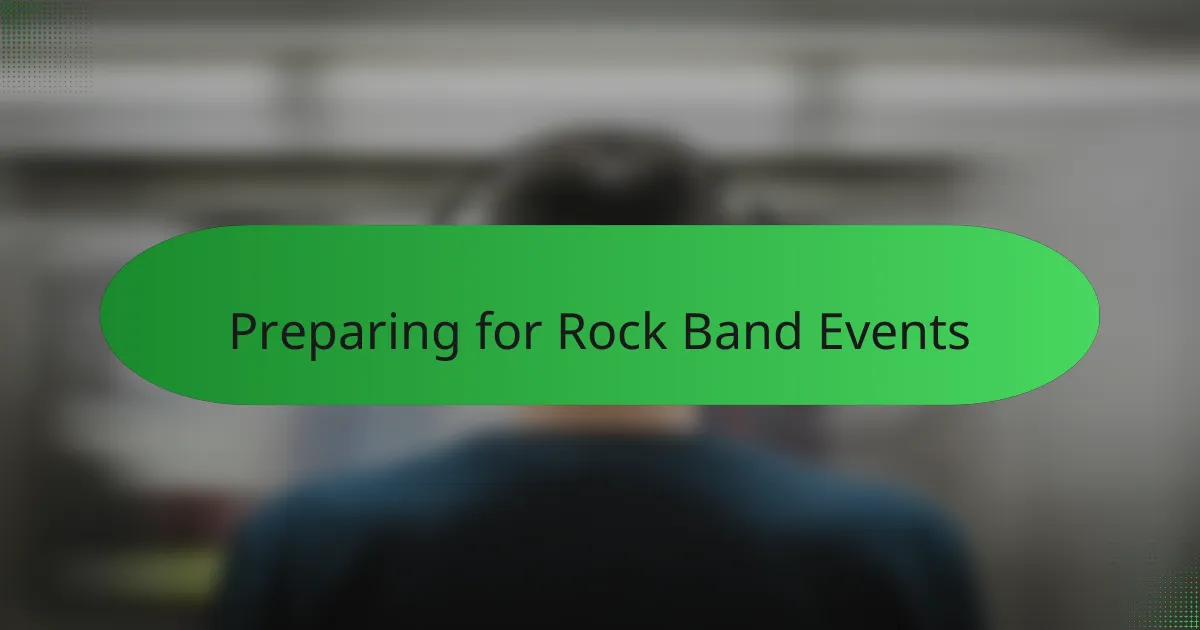
Preparing for Rock Band Events
Preparing for rock band events means more than just packing your gear; it’s about understanding the venue and the band’s style. I make it a point to check the setlist or watch previous performances when possible—that way, I know when to expect a headbanging solo or a mellow acoustic moment. Have you ever tried filming without that kind of insight? It’s like shooting in the dark without a flashlight.
Timing your arrival also makes a huge difference. I’ve learned that getting there early not only helps me find the best spots but also allows me to chat with the crew and maybe even the band. These interactions often give me tips on lighting cues or special effects that’ll happen during the show—a little insider knowledge that no tutorial can teach.
And then there’s the mental prep. Rock concerts are chaotic environments, and I remind myself to stay flexible and patient. One time, a technical glitch threatened to ruin a great set, but staying calm helped me improvise and capture unforgettable shots once the music kicked back in. Have you noticed how a cool head can make all the difference when filming live?
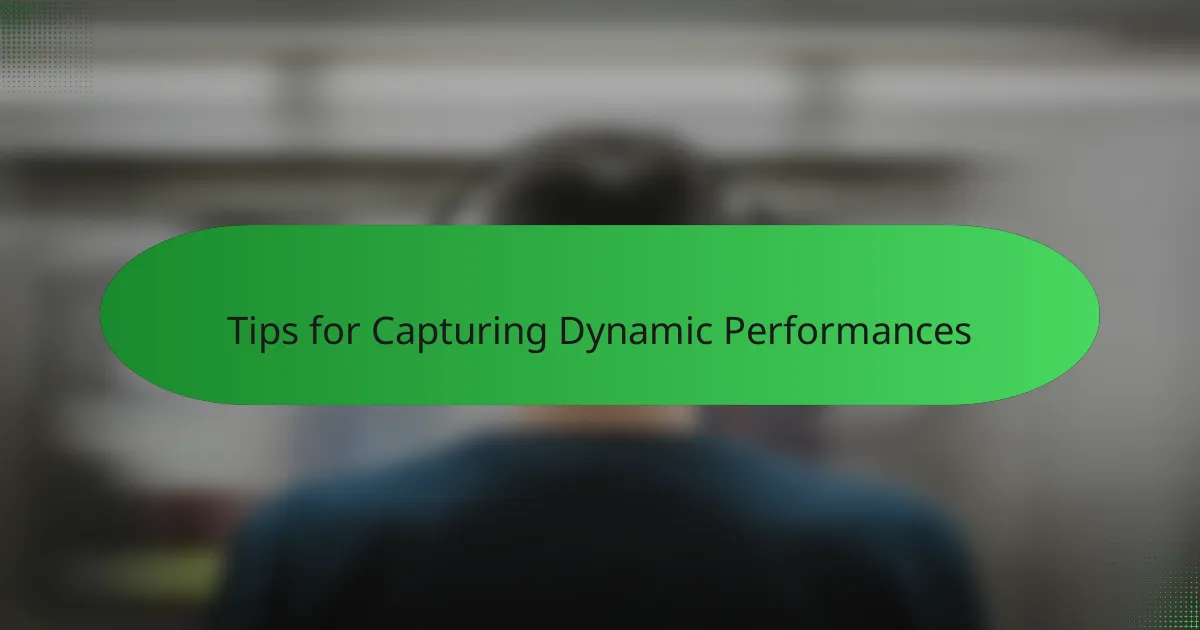
Tips for Capturing Dynamic Performances
Capturing dynamic performances means being ready to move with the music. I’ve found that anticipating stage movements—like when the lead singer leans into the crowd or the drummer goes for a wild fill—helps me frame shots that burst with energy instead of looking static. Do you ever catch yourself waiting too long to click, only to miss that perfect moment? Learning to predict those flashes of intensity really changed my filming game.
Another trick I swear by is using varied angles and shot types to keep the visual story exciting. Sometimes a close-up of guitar strings vibrating or a low-angle shot of pounding drums can convey the power of the music better than a wide stage view. I recall one show where switching to a tight shot during a guitar solo brought so much emotion to the footage, the band even praised it afterward.
Lastly, don’t be afraid to embrace the chaos. Live rock shows are unpredictable, and the best performances often come with spontaneous moments like crowd surfing or impromptu jams. When I stopped trying to control everything and let the energy guide my camera, the results felt raw and authentic. Have you ever noticed how those unplanned shots often become the most memorable ones?
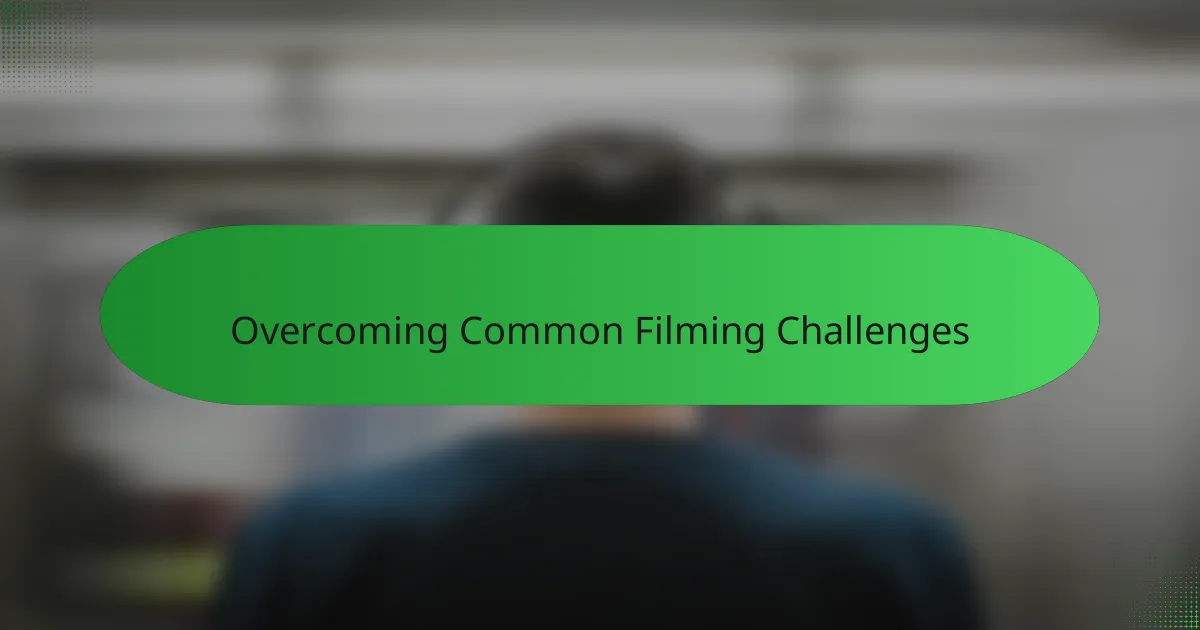
Overcoming Common Filming Challenges
One of the biggest challenges I faced was dealing with unpredictable lighting changes. At a grunge concert, the stage would flash from deep red to pitch black in seconds, and I quickly learned that adjusting my camera settings on the fly was essential. Have you ever scrambled to tweak your aperture mid-song? It feels like a high-stakes game, but mastering it makes all the difference.
Audio balance can be a nightmare too. I recall a punk gig where the bass obliterated all other sounds in my recording, leaving the vocals lost in the mix. It taught me to always check audio levels before the show and bring backup gear, even if it means carrying more weight. Doesn’t it feel frustrating when your footage looks great but the sound ruins everything?
Then there’s the chaos of the crowd itself—jostling and getting bumped can ruin a shot or cause equipment damage. I started using a lightweight stabilizer and positioning myself where I could move smoothly without blocking others’ views. Managing these physical hurdles while staying focused on the music requires practice, but it’s incredibly rewarding when you nail that perfect shot despite the madness.

Editing Live Music Footage
Editing live music footage is where all the chaos and energy from the concert start to come together into a cohesive story. I’ve spent hours fine-tuning clips to make sure every guitar riff and drum hit syncs perfectly with the audio—because nothing kills the vibe faster than a lagging soundtrack. Have you ever felt that frustration when the footage looks amazing, but the timing is just off? That’s why I’m meticulous about syncing everything precisely.
Color grading is another part I really enjoy. Live shows flood the stage with wild colors, but the raw footage can sometimes look oversaturated or dull depending on the lighting conditions. I remember a show where the lighting turned neon green, and with careful adjustments, I managed to bring out the band’s authentic look without washing out their faces. It’s like painting with light—but digitally.
Sometimes, I find the hardest part is deciding what to include and what to cut. There’s so much raw material, but not every moment deserves the spotlight. I’ve learned to trust my gut and choose clips that capture the emotion and energy, even if they’re not the most technically perfect shots. After all, isn’t that what fans want to relive—the heart and soul of the performance?

Sharing and Promoting Your Videos
Sharing your live music videos is where your hard work truly gets to shine. I usually start by uploading them to platforms like YouTube or Vimeo because their communities really appreciate concert footage, and the video quality holds up well. Have you noticed how a well-titled and tagged video can suddenly pull in viewers you never expected? That little effort can make a huge difference.
Promoting your content goes beyond just posting links on social media. I’ve found that engaging with fan groups or forums dedicated to the band creates genuine connections and boosts visibility. One time, sharing a clip on a fan subreddit sparked a whole conversation that led to the band themselves resharing my video—it was such a surreal moment, like being part of the scene, not just a spectator.
I also pay attention to timing. Posting right after the concert while excitement is still high seems to gather more views and shares. It’s like catching lightning in a bottle; if you wait too long, the buzz fades. Have you ever wondered why some videos go viral overnight? From my experience, it’s all about being in sync with the fan community’s pulse.